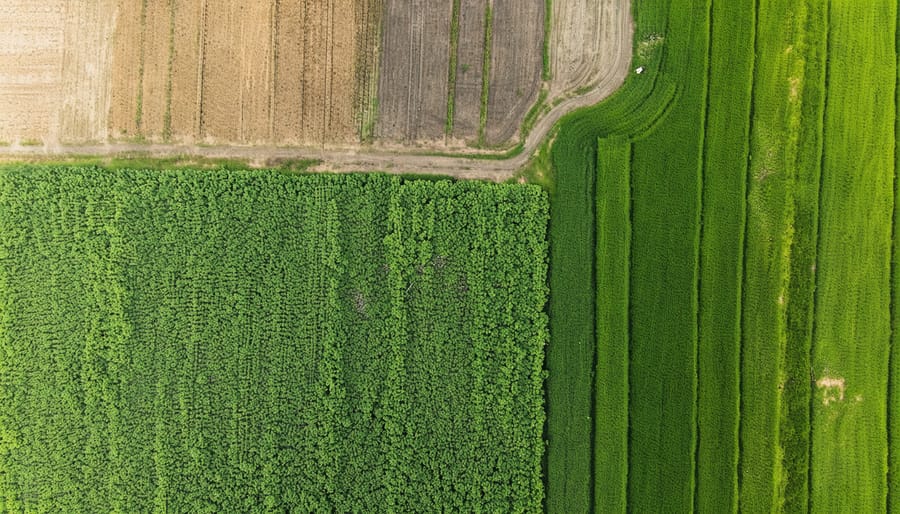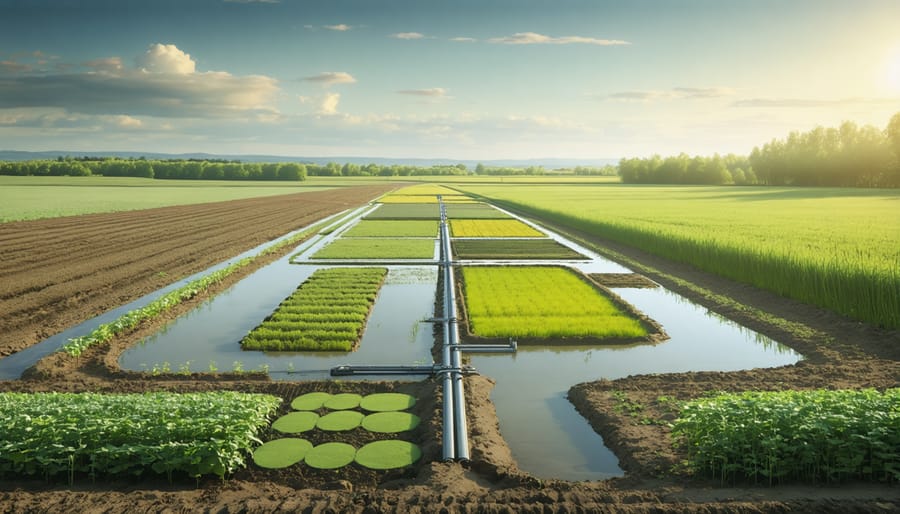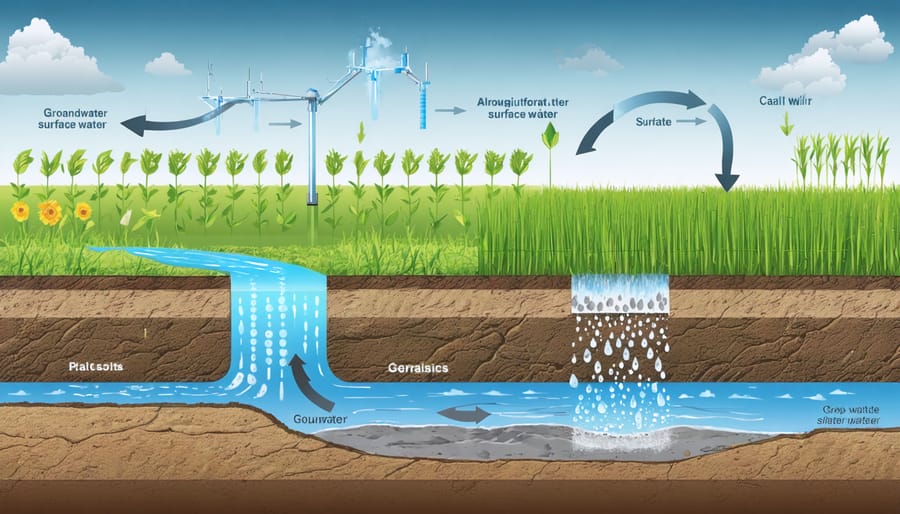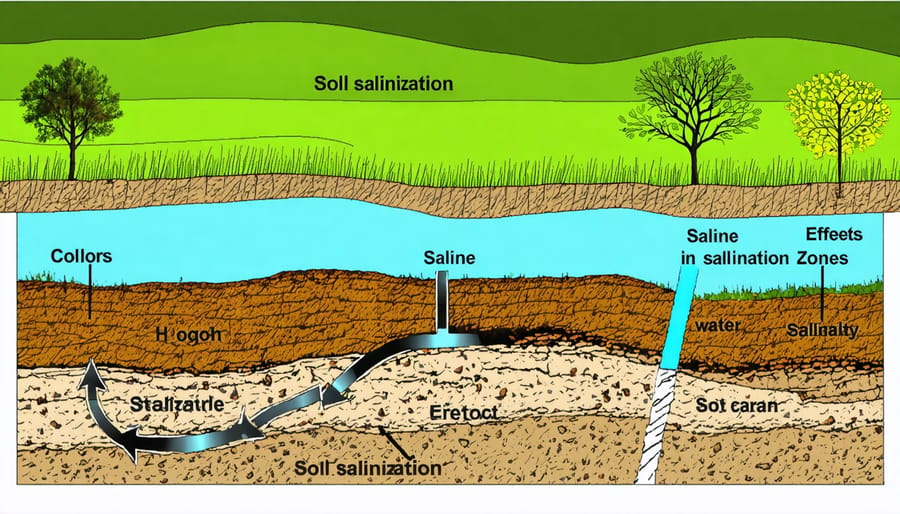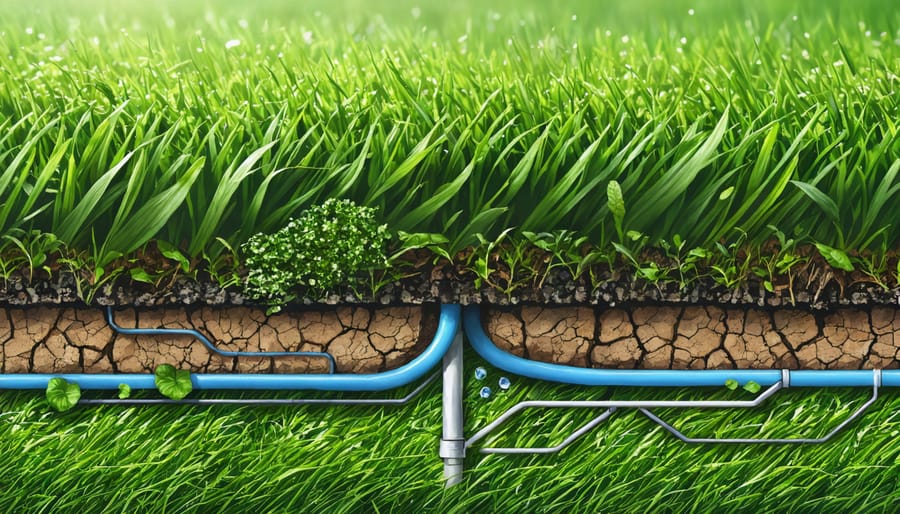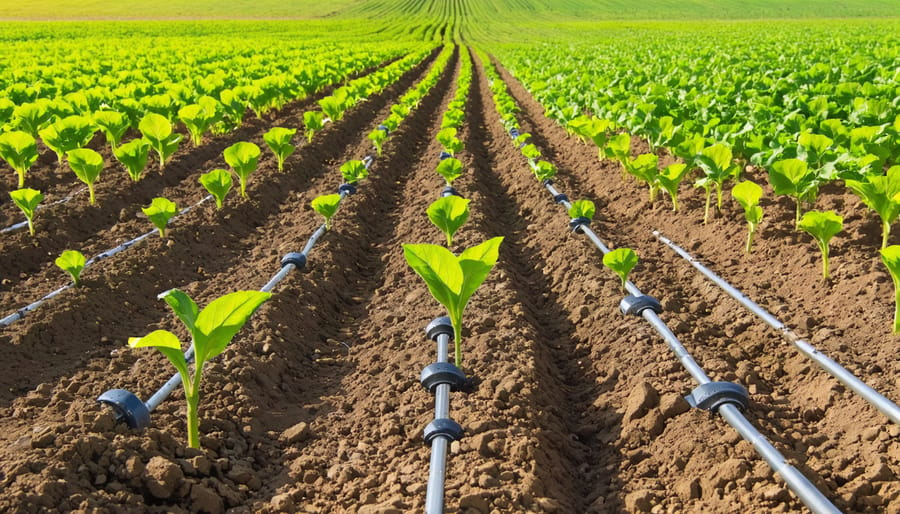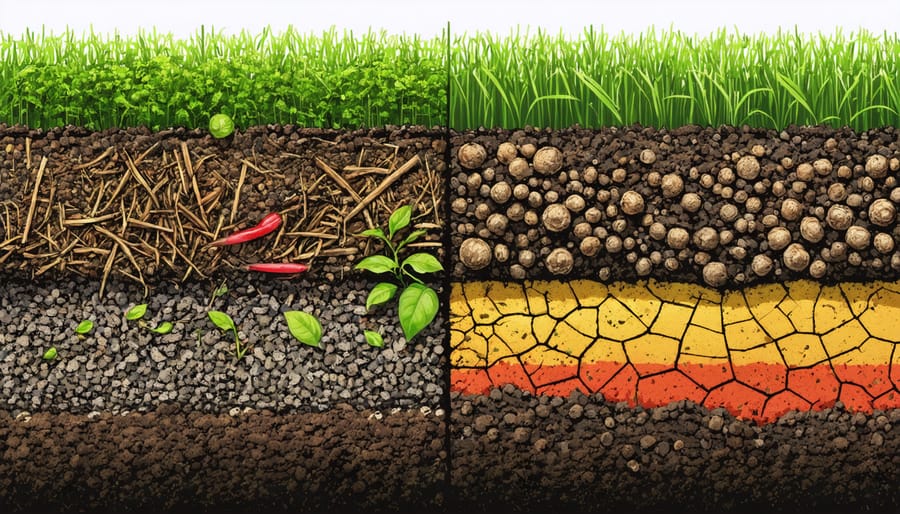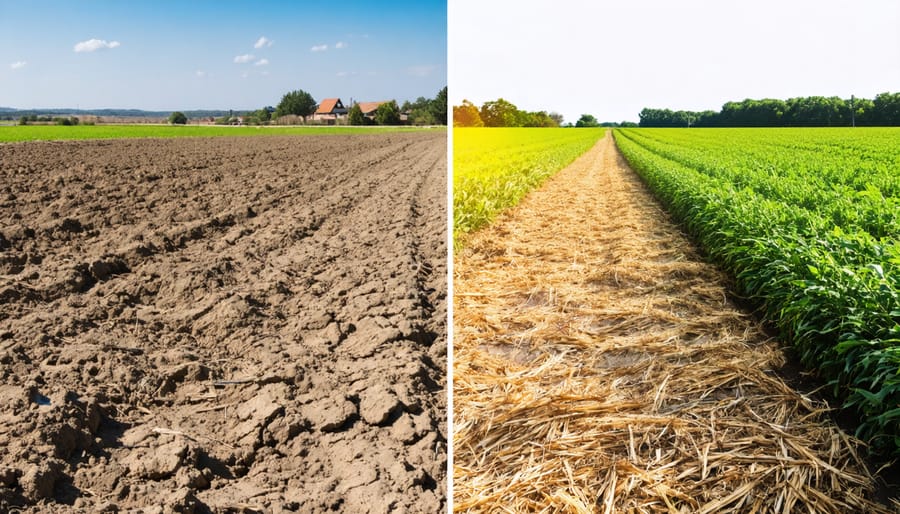Transforming communities into climate-resilient strongholds demands immediate, collective action across Canadian farmlands. From Medicine Hat to Peace River, Alberta’s agricultural communities are pioneering innovative approaches that safeguard both land and livelihoods against increasingly unpredictable weather patterns.
Successful climate-resilient communities share three critical foundations: robust water management systems that capture and conserve moisture during extreme events, diversified agricultural practices that strengthen soil health, and strong social networks that enable rapid knowledge sharing and resource mobilization during environmental challenges.
In Alberta alone, over 200 farming communities have already implemented climate-resilient strategies, resulting in a 40% reduction in crop losses during extreme weather events compared to a decade ago. These communities demonstrate how traditional farming wisdom, combined with modern sustainable practices, creates a powerful shield against climate variability.
The urgency for building climate resilience has never been greater, yet the solutions are more accessible than ever. By focusing on practical, community-driven approaches to water conservation, soil health management, and collaborative resource sharing, Canadian agricultural communities are not just surviving climate challenges – they’re thriving through them.
This transformation to climate resilience isn’t just about environmental protection; it’s about securing the future of Canadian agriculture and the communities that depend on it.
Building Strong Foundations: Soil Health for Climate Resilience
Cover Cropping Strategies for Alberta’s Climate
Alberta farmers are increasingly turning to cover cropping as a vital strategy for building climate resilience. Local success stories, like the Stettler County demonstration farm, show how integrating cover crops such as fall rye and hairy vetch has improved soil health and water retention even during drought conditions.
Third-generation farmer Sarah Thompson from Lacombe shares her experience: “We’ve seen dramatic improvements in soil structure since implementing cover crops three years ago. Our fields now handle both excess moisture and dry spells better than ever before.”
For Alberta’s unique climate, timing is crucial. Most farmers find success by seeding cover crops in early August, allowing adequate establishment before winter. Popular cold-hardy options include winter wheat, fall rye, and field peas, which provide excellent soil protection through harsh prairie winters.
The Alberta Conservation Association recommends a diverse mix of cover crop species to maximize benefits. A typical successful combination includes:
– Cereal rye for deep root structure
– Clover for nitrogen fixation
– Radish for breaking up compacted soil
– Oats for quick establishment and biomass
Community learning groups across central Alberta have been instrumental in sharing knowledge and experience. The Red Deer County Soil Health Initiative hosts regular field days where farmers can observe different cover cropping systems in action and learn from their neighbors’ successes and challenges.
These strategies have shown particular resilience during extreme weather events, with cover-cropped fields experiencing 30% less soil erosion during heavy rains and requiring 25% less irrigation during dry periods.
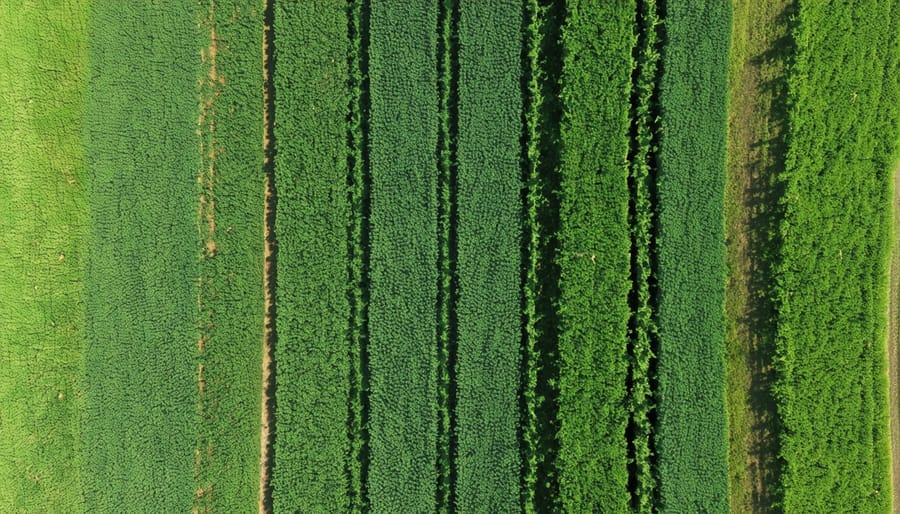
Organic Matter Management in Prairie Soils
Building healthy organic matter in prairie soils is fundamental to creating climate-resilient farms. Alberta farmers have found success by implementing integrated soil moisture management techniques that focus on organic matter retention.
Cover cropping has emerged as a leading practice, with farmers reporting significant improvements in soil structure after incorporating diverse species like clover, rye, and vetch. These crops protect the soil surface while their root systems contribute valuable organic material below ground. Many producers are finding success with “cocktail mixes” of 6-8 different cover crop species, each serving a unique purpose in building soil health.
Crop residue management is equally important. Rather than removing straw and stubble, leaving these materials on fields provides a natural mulch layer that breaks down over time, contributing to organic matter content. Modern equipment allows for precise residue spreading, ensuring even distribution across fields.
Reducing tillage operations helps preserve existing organic matter while encouraging beneficial soil biology. Zero-till systems, when combined with proper rotation and residue management, have shown particular promise in building long-term soil resilience.
Local soil testing services can help monitor organic matter levels, typically aiming for 4-6% in productive prairie soils. Regular testing allows farmers to track progress and adjust management strategies accordingly, ensuring their efforts translate into measurable improvements in soil health.
Smart Water Management Systems
Precision Irrigation Technologies
Modern precision irrigation technologies are transforming how Alberta farmers manage water resources while building climate resilience. From small market gardens to large-scale operations, cost-effective solutions exist for every farm size and budget.
For smaller operations under 10 hectares, drip irrigation systems offer an excellent entry point into precision watering. These systems typically cost between $2,000 to $5,000 per hectare and can reduce water usage by up to 40% compared to traditional methods. Local farmer Sarah Thompson from Lethbridge reports saving nearly $3,000 in water costs during her first season using drip irrigation on her 5-hectare vegetable farm.
Medium-sized farms can benefit from soil moisture sensors and weather stations, which provide real-time data for irrigation scheduling. These systems, ranging from $5,000 to $15,000, help farmers apply water only when and where it’s needed. The Irrigation Research Institute in Brooks has documented water savings of 25-30% among farms using these technologies.
For larger operations, centre pivot systems equipped with variable rate irrigation technology offer the most comprehensive solution. While the initial investment is higher ($50,000-$100,000), many Alberta farmers report ROI within 3-5 years through reduced water and energy costs.
Cost-sharing programs through the Canadian Agricultural Partnership can offset up to 30% of technology investments. The Southern Alberta Conservation Association offers additional support through their Water Smart initiative, providing both funding and technical expertise to farmers transitioning to precision irrigation systems.
Remember, starting small and scaling up is often the most sustainable approach. Many successful Alberta farmers began with basic soil moisture monitors before gradually expanding to more sophisticated systems as their expertise and confidence grew.
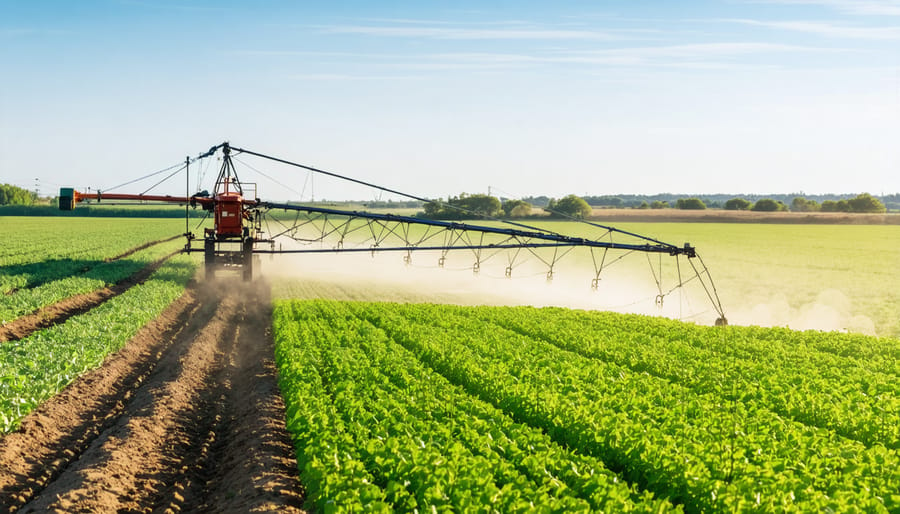
Water Storage and Conservation Methods
In Alberta’s changing climate, effective water conservation strategies have become essential for farm sustainability. Smart storage systems and efficient usage methods can help your operation weather dry spells while maintaining productivity.
Dugouts remain a trusted solution for many Alberta farmers, but modern improvements like floating covers can reduce evaporation by up to 90%. Installing windbreaks around water storage areas further prevents water loss and protects against wind-driven debris contamination.
Underground cisterns offer another practical option, particularly for smaller operations. These systems can store between 5,000 to 30,000 litres and maintain consistent water temperature, reducing algae growth and evaporation losses.
Soil moisture conservation techniques play a crucial role in water management. Many successful Alberta farmers have adopted minimum tillage practices, which can retain 25% more soil moisture compared to conventional methods. Adding organic matter through cover cropping and crop residue management improves the soil’s water-holding capacity, typically storing an additional 16,000 litres per hectare for every 1% increase in organic matter.
Precision irrigation systems have shown remarkable results across the prairie provinces. Soil moisture sensors and weather monitoring equipment help farmers apply water only when and where needed, reducing usage by up to 30% while maintaining crop yields.
Consider implementing water recycling systems for livestock operations. Simple modifications to existing drainage systems can capture and filter runoff for reuse in cleaning or irrigation, creating a closed-loop system that maximizes efficiency.
These methods work best when combined with regular monitoring and maintenance, ensuring your water management system remains effective throughout the growing season.
Community-Based Climate Solutions
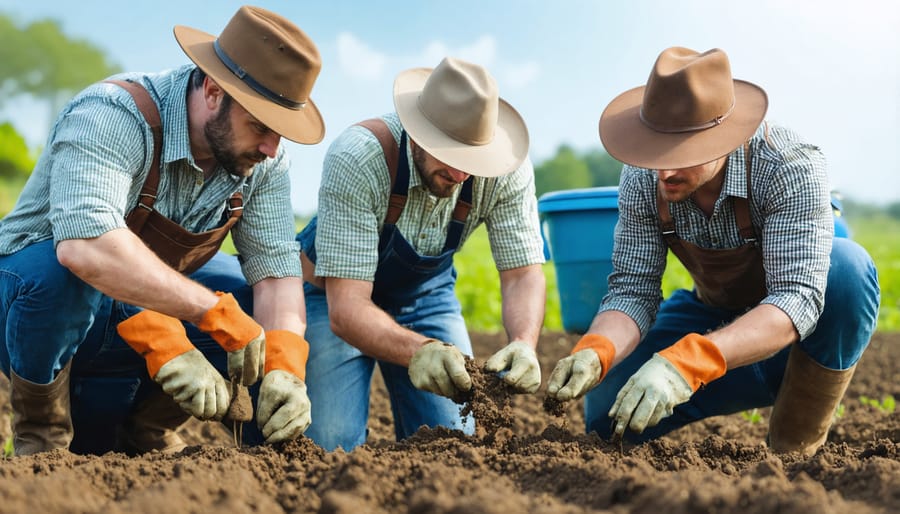
Local Farmer Networks and Knowledge Sharing
In Alberta’s agricultural landscape, the power of community collaboration has proven instrumental in building climate resilience. The Lacombe County Farmers’ Network stands as a shining example, where over 50 local farmers meet monthly to share insights on drought-resistant crop varieties and water conservation techniques. Through their collective expertise, participants have reported a 30% improvement in water use efficiency across their operations.
The success of community watershed management initiatives in the Red Deer River region demonstrates how knowledge sharing can transform farming practices. Here, farmers have collaborated to implement innovative irrigation scheduling systems and soil moisture monitoring networks, sharing real-time data to optimize water usage across connected properties.
The Farmer-to-Farmer Mentorship Program, launched in 2019, pairs experienced producers with newcomers to share generational knowledge about local climate patterns and adaptive strategies. This initiative has helped over 100 new farmers establish climate-resilient operations in their first three years.
Digital platforms have further strengthened these networks, with the Alberta Farm Conservation Hub connecting 2,000+ producers through its online forum and mobile app. Members share daily updates on weather patterns, soil conditions, and successful adaptation strategies, creating a robust support system that helps farmers respond quickly to changing conditions.
Agricultural Extension Support Programs
Alberta farmers have access to numerous support programs designed to enhance climate resilience in their operations. The Agricultural Climate Solutions (ACS) program offers direct funding and technical assistance for implementing climate-smart practices, with local extension agents providing personalized guidance throughout the process.
The Alberta Agriculture and Forestry department maintains a network of Climate Information Service specialists who work directly with farming communities to interpret weather data and develop adaptive strategies. These specialists regularly conduct workshops and field demonstrations, helping farmers understand how to apply climate-resilient techniques in their specific contexts.
The Canadian Agricultural Partnership (CAP) provides cost-sharing opportunities for farmers investing in climate-adaptive infrastructure and technology. Through this program, farmers can receive up to 50% funding for projects such as efficient irrigation systems and soil monitoring equipment.
Regional agricultural societies across Alberta organize peer-to-peer learning networks where farmers can share experiences and best practices. These networks are particularly valuable for new farmers or those transitioning to climate-resilient methods.
Additional resources include:
– Free soil health assessments through local conservation authorities
– On-farm climate risk assessments
– Access to regional climate adaptation toolkits
– Regular workshops on weather-smart farming practices
– One-on-one consultations with agricultural extension specialists
Farmers can access these programs through their local agricultural service board or by contacting the Alberta Climate Information Service directly.
Economic Benefits of Climate-Resilient Practices
Farmers across Alberta are discovering that climate-resilient practices not only protect their land but also contribute significantly to their bottom line. The economic benefits of water conservation and other resilient farming practices are becoming increasingly evident through real-world success stories.
Take the case of James Morrison, a third-generation farmer near Lethbridge, who implemented reduced tillage and cover cropping practices. Within three years, he decreased his irrigation costs by 30% and reduced soil erosion-related losses by an estimated $75 per hectare annually. His success inspired neighbouring farms to adopt similar practices, creating a ripple effect of economic benefits throughout the community.
The Southern Alberta Conservation Network reports that farms using climate-resilient practices demonstrate 25% better yield stability during extreme weather events compared to conventional operations. This translates to more reliable income streams, particularly during challenging growing seasons.
In the Red Deer region, a collective of farms implementing drought-resistant crop varieties and efficient irrigation systems saved an average of $12,000 per growing season on water and energy costs. These farms also reported improved crop quality, commanding premium prices at market.
Beyond direct cost savings, climate-resilient practices often qualify for various incentive programs. The Canadian Agricultural Partnership offers grants of up to $50,000 for implementing sustainable water management systems, while carbon credit programs provide additional revenue streams for farms practicing soil carbon sequestration.
Insurance companies are taking notice too. Several Alberta-based insurers now offer reduced premiums to farms with documented climate-resilient practices, recognizing their lower risk profile during extreme weather events.
The initial investment in climate-resilient infrastructure typically pays for itself within 3-5 years, with ongoing benefits extending well beyond. As Sarah Chen, an agricultural economist at the University of Alberta notes, “These practices aren’t just about environmental stewardship – they’re about building long-term financial resilience for our farming communities.”
Building climate-resilient communities in Alberta’s agricultural sector is within our reach, and the path forward is clear. By implementing the strategies we’ve discussed, farmers can create robust systems that withstand climate challenges while maintaining productive operations.
Start with soil health improvements through cover cropping and reduced tillage practices. These foundational changes create immediate benefits and long-term resilience. Consider joining local farmer-led watershed groups to share experiences and resources with neighbours who face similar challenges.
Water management should be your next priority. Install efficient irrigation systems, collect rainfall data, and develop water storage solutions that work for your specific operation. Remember that even small changes, like adjusting planting dates or incorporating drought-resistant crop varieties, can make a significant difference.
Take advantage of available resources and support programs. Connect with your local agricultural extension office, participate in workshops, and explore government funding opportunities for climate adaptation projects. The Alberta Climate Information Service offers valuable data to help inform your decision-making process.
Most importantly, remember that building resilience is a community effort. Share your successes and lessons learned with other farmers, participate in local agricultural organizations, and stay informed about new climate-smart farming practices. By working together and implementing these strategies step by step, we can create stronger, more resilient farming communities across Alberta.
Your actions today will help secure a sustainable future for Canadian agriculture. Start with one change, measure its impact, and gradually build upon your successes.

